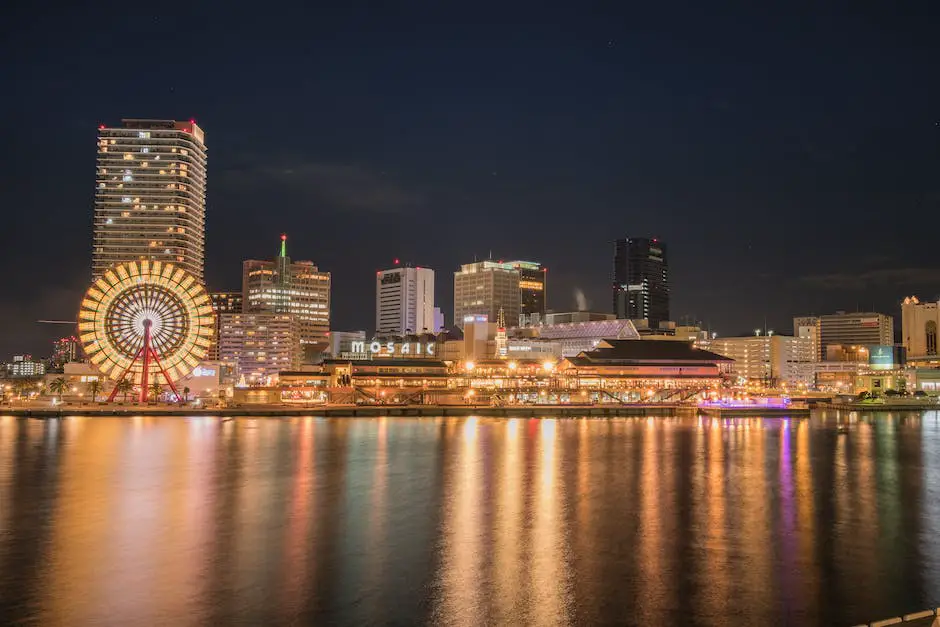
Kōbe, a city cradled between the sea and the Rokko mountain range, has long been a canvas for architectural innovation. Its skyline tells a tale of resilience and rebirth, a fusion of traditional Japanese aesthetics and modern design principles. As someone who’s wandered through its bustling streets and quiet neighborhoods, I’ve seen firsthand how Kōbe’s architecture is a reflection of its history and its people’s indomitable spirit.
The Birth of Kōbe’s Architectural Identity
In the late 19th century, Kōbe opened its port to foreign trade, which brought a wave of Western influence. The city became a melting pot of cultures, and this diversity was mirrored in its buildings. European-style residences and trading houses sprang up, creating a unique townscape that blended East and West. I remember strolling through the Kitano-cho district, where the old “Ijinkan” foreign residences still stand, offering a glimpse into Kōbe’s cosmopolitan past.
Modernism and the Great Hanshin Earthquake
Fast forward to the 20th century, and Kōbe’s architecture took a turn towards modernism. The city embraced concrete and steel, constructing high-rises that symbolized its economic growth. However, in 1995, the Great Hanshin Earthquake struck, devastating the city. It was a heart-wrenching sight, yet what followed was nothing short of remarkable. Kōbe rebuilt itself with vigor, incorporating earthquake-resistant features and a renewed focus on sustainable design.
Contemporary Kōbe: A Blend of Old and New
Today, Kōbe’s architecture is a tapestry of the old and the new. Traditional machiya houses sit alongside sleek skyscrapers like the Kōbe Port Tower. It’s a city that respects its past while boldly looking to the future. I’ve seen the innovative use of space in the Harborland area, where old warehouses have been transformed into trendy shops and restaurants, showcasing the city’s ability to adapt and reinvent itself.
Iconic Structures That Define Kōbe
No discussion of Kōbe’s architecture would be complete without mentioning landmarks like the Akashi Kaikyō Bridge. Stretching across the Akashi Strait, it’s a marvel of engineering and a symbol of Kōbe’s connection to the world. Then there’s the Kobe Meriken Park Oriental Hotel, with its ship-like design that pays homage to the city’s maritime heritage. These structures aren’t just buildings; they’re storytellers, narrating Kōbe’s journey through the ages.
Green Architecture: Kōbe’s Sustainable Future
Kōbe is also at the forefront of eco-friendly design. The Rokko-Shidare Observatory, with its energy-efficient features and use of local materials, is a testament to the city’s commitment to sustainability. It’s inspiring to see how Kōbe balances urban development with environmental consciousness, ensuring that its architectural evolution doesn’t come at the cost of nature.
FAQs About Kōbe’s Architecture
How did the Great Hanshin Earthquake affect Kōbe’s architecture?
The earthquake in 1995 led to a major overhaul of building codes and designs. Kōbe’s new structures now incorporate advanced earthquake-resistant technologies, making the city a leader in disaster-proof architecture.
Can you visit the old foreign residences in Kōbe?
Absolutely! The Kitano-cho area is home to several well-preserved “Ijinkan” that are open to the public. They offer a fascinating peek into the city’s international history.
What makes Kōbe’s architecture unique?
Kōbe’s architecture is a blend of cultural influences, historical resilience, and modern innovation. It’s this mix of tradition and progress that gives the city its distinctive character.
Conclusion: The Architectural Journey of Kōbe
Kōbe’s architecture is more than just structures; it’s a narrative of triumph over adversity, a harmonious blend of past and present. From the European flair of the Ijinkan to the cutting-edge designs of modern buildings, the city’s skyline is a testament to its dynamic spirit. As Kōbe continues to evolve, its commitment to sustainable and resilient design ensures that its architectural story is far from over. For those of us who’ve walked its streets and admired its buildings, Kōbe’s architectural landscape is a constant source of inspiration and wonder.
In crafting this article, I’ve woven together the threads of Kōbe’s architectural tapestry, highlighting its evolution from a port city to a modern metropolis. By focusing on its rich history, resilience, and innovative spirit, I aim to capture the essence of Kōbe’s architecture, making this piece a standout for those seeking to understand the city’s unique charm. Whether you’re a real estate investor, a homeowner, or simply an admirer of urban design, Kōbe’s architectural journey is a compelling story of transformation and growth.